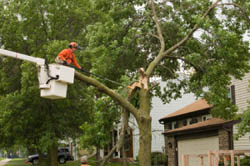Hazardous Tree Management Services
Orange County Hazardous Tree Inspection, Cabling, and Removal
 Call Arborwell Professional Tree Management for timely hazardous tree management services – including inspection, trimming, cabling and removal – to help avoid risk of physical injury and property damage. Spotting a hazard tree on your premises, however, requires a trained eye. An expert arborist conducting regular inspections is your best resource for efficient hazard tree management.
Call Arborwell Professional Tree Management for timely hazardous tree management services – including inspection, trimming, cabling and removal – to help avoid risk of physical injury and property damage. Spotting a hazard tree on your premises, however, requires a trained eye. An expert arborist conducting regular inspections is your best resource for efficient hazard tree management.
San Deigo area hazardous tree removal services
Call us today at to have your Orange County area property inspected for hazardous trees. To schedule a visit from one of our ISA-certified arborists please fill out our Tree Assessment form. We serve all areas of Orange County including Anaheim, Orange, Pomona, Fullerton, Laguna Nigel, Irvine, and Huntington Beach with professional hazardous tree management services.
Recognizing a Hazardous Tree
A hazardous tree is one with structural defects that cause failure of all or part of the tree. Such a tree could strike a target like a vehicle, building, or a place where people gather such as a park bench, picnic table, street, or backyard. Regular tree inspections to identify and manage hazard trees can protect property and save lives.
There are several physical signs that Arborists look for to recognize a hazard tree. These include:
- Dead Wood which is often dry and brittle and cannot bend in the wind. It is unpredictable and can break and fall at any time so it can be especially dangerous.
- Cracks i.e. deep splits that extend through the bark into the wood. They are an indication that the tree is already failing.
- Weak Branch Unions are places where branches are not strongly attached to the tree.
Decay like soft or crumbly wood or a cavity where the wood is missing can pose a serious hazard. Growth of mushrooms, conks, and brackets growing on root flares, stems, or branches are indicators of advanced decay. - Cankers are caused by wounding or disease. A canker is a localized area on the stem or branch of a tree, where the bark is sunken or missing. The presence of a canker increases the chance of the stem breaking near the canker.
- Root Problems: Trees with root problems are likely to blow over and fall without warning in wind storms. Soil mounding, twig dieback, dead wood in the crown, and discolored or smaller than normal leaves are symptoms often associated with root problems. As most defective roots are underground and out of sight, aboveground symptoms serve as the best warning.
- Poor Tree Architecture like trees with strange shapes or leaning trees indicates weakness or structural defects and imbalance. Poor architecture often arises after many years of damage from storms, unusual growing conditions, improper pruning, topping, and other damage.
- Multiple defects indicate that a tree is extremely hazardous and must be dealt with immediately.
Once the hazard tree has been identified, a complete evaluation of the extent of the hazard is the performed. This is followed by corrective measures like moving the target, tree pruning or tree removal. Trees of significant historical or landscape value can be preserved by cabling and bracing.
Arborwell’s team of Anaheim area certified arborists can identify hazardous trees and our trained technicians are experts at carrying out corrective measures.
Call today or fill out our online tree assessment request form for a complete hazard assessment of your trees.